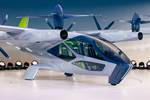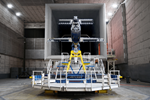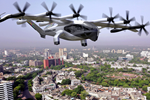Archer, NASA sign agreement for eVTOL, space battery cells R&D
This initial project under the Space Act Agreement is focused on studying and developing high-performance battery cells, as well as performing safety testing, to achieve purpose-built solutions for electric aircraft.
Electric vertical takeoff and landing (eVTOL) aircraft manufacturer Archer Aviation Inc. (Santa Clara, Calif., U.S.) has signed a Space Act Agreement with the National Aeronautics and Space Administration (NASA, Washington, D.C., U.S.). The collaboration will kick off with an initial project focused on studying high-performance battery cells and safety testing targeted for advanced air mobility (AAM) and space applications.
Archer believes that while the supply chain for electric vehicles (EVs) in the U.S. is maturing, the supply chain for electric aircraft remains nascent not just here in the U.S., but globally. NASA’s goal is to test Archer’s battery cell and system design and share the results to push the entire AAM industry forward. Maturing battery technology is anticipated to be a key enabling factor for the mass production and adoption of electric aviation.
Archer plans to deliver a high-performing battery pack with leading levels of safety to its Midnight aircraft, validating that these cells are tailor-made for aerospace applications, including eVTOL, electric conventional takeoff and landing (eCTOL) aircraft and for potential use in space.
“We’re proud to partner with NASA, who has pioneered the eVTOL industry over the last three-plus decades, in support of our collective mission to ensure U.S. leadership in aerospace continues for decades to come,” Adam Goldstein, Archer’s founder and CEO, says. “Many countries around the world are challenging the U.S. in this new era of flight and our country is at risk of losing its global leadership position unless we work together, government and industry, to ensure we seize the moment and pioneer this new era of aviation technology.”
As part of the joint efforts around battery characterization, NASA and Archer will focus on further testing the safety, energy and power performance capabilities of the battery cells. Tests will be performed using the European Synchrotron Radiation Facility (ESRF), a high-speed X-ray facility, to understand how the cells function during extreme abuse cases. Archer has chosen these cells to power the proprietary electric powertrain system it has designed, developed and is beginning to mass manufacture for Midnight. The battery cell form factor chosen by Archer, a cylindrical cell, is reported to have a track record of safety, performance and scalability proven through decades of volume manufacturing, deployed across many applications globally, including in millions of EVs.
Related Content
-
Update: THOR project for industrialized, recyclable thermoplastic composite tanks for hydrogen storage
A look into the tape/liner materials, LATW/recycling processes, design software and new equipment toward commercialization of Type 4.5 tanks.
-
Lilium launches M&A process, targets eVTOL program continuation
Despite court-approved insolvency filings and beginning first investor briefings, Lilium remains fully focused on re-emerging following restructuring, setting its sights on fresh investment to support the Lilium Jet.
-
Vertical Aerospace eVTOL prototype goes down during uncrewed test flight
The U.K. company has confirmed the Aug. 9 accident that resulted in significant aircraft damage and potential setbacks.

















